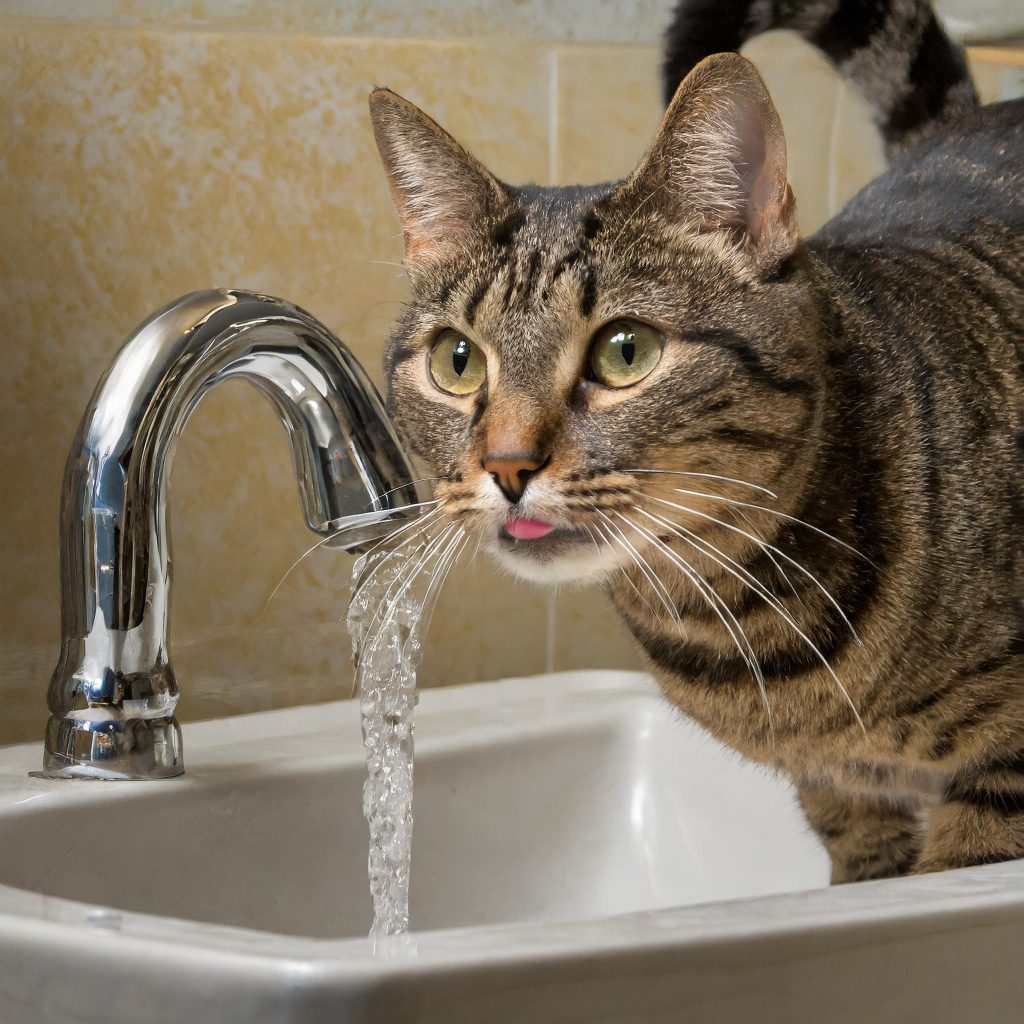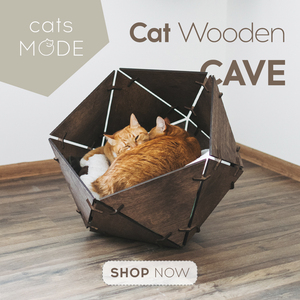Those Funny Feline Ways
As any cat owner knows, our feline friends have some pretty peculiar habits. From kneading blankets to hiding in boxes, cats do a lot of things that leave us scratching our heads. While these behaviors can baffle us, most have reasonable explanations rooted in instinct and natural cat mannerisms.
In this article, we’ll unravel the mysteries behind some of the most common cat behaviors we all find a bit weird. Read on to learn why your cat does the odd things they do!
Drinking from the Faucet
Does your cat go for water straight from the tap? Cats naturally prefer fresh, moving water over still sources, an instinct that protects them from illness associated with stagnant pools. In the wild, standing water can harbor bacteria, larvae, or other contaminants. But flowing water from streams and waterfalls stays cleaner and more oxygenated.
When your cat drinks from the faucet, they’re indulging their natural preference for the freshest water around. Even a dripping faucet can entice them to the sink over a dish full of fresh water, so consider getting a circulating fountain if your tap is a cat trap.

Rubbing Your Legs
Ever notice your cat weaving in and out between your legs, almost pushing against you with their cheek as they walk by? This behavior is called bunting, and it’s your cat’s way of marking you as their territory. When cats bunt against objects, they deposit pheromones from glands around their mouth and face. This leaves their scent on you, signaling to other cats that you belong to them. So take those forceful leg rubs as a compliment — your cat is claiming you as part of their family!
Weird Sleeping Positions
From contorting into a furry pretzel to snoozing with their head hanging upside down, cats often sleep in the goofiest ways imaginable. But those odd sleeping positions actually help them stay comfy and safe. Curling into a tight ball conserves body heat and protects your cat’s belly, an area vulnerable to attack. Lying with their paws tucked in reduces heat loss from their pads. And the famous upside-down nap? It allows cats to remain slightly alert while still getting rest.
The next time you see your feline folded into a furry yoga pose, just know it’s not as uncomfortable as it looks! Their flexible spine and loose skin allow them to sleep soundly no matter how preposterous their posture.
Crazy for Catnip
When cats encounter catnip, they often react by rolling around erratically, running and jumping, and attacking the plant. But why does this herb make cats go wild? The Nepeta cataria plant contains an oil called nepetalactone that is remarkably stimulating for cats. When inhaled, it triggers sensory receptors in their brain that induce a euphoric state similar to a narcotic reaction in humans.
Essentially, catnip gives cats a natural high! Not all cats react to it, with only about 50-70% sensitive to nepetalactone. But for those who do feel the effect, it provides a few minutes of intoxicated excitement before the influence wears off.
Kneading and Claw Sharpening
Kneading, or making alternating pushing movements with their paws, is a common behavior cats display, especially when sitting on soft surfaces or their owner’s lap. They often purr and seem content while kneading, but why do cats do it?
The most common explanation is that it stems from their kittenhood, when kneading helped stimulate mom’s milk flow while nursing. The motion continues into adulthood as a comfort mechanism. Cats may knead when they feel happy or want to mark something with their scent.
You may also notice your cat “sharpening” their claws on scratching posts — and your furniture. In the wild, claw sharpening helps cats stay ready to hunt prey and defend themselves. Indoor cats still feel the urge, which provides a satisfying sensory experience for their paws. If they favor your furniture, try products like fabric guards and scent repellents in combination with training techniques designed to curb the behavior.
Hiding in Boxes and Bags
If you’ve ever found your cat snoozing in a paper bag or packing box, you know small, enclosed spaces seem to hold special appeal. But why do cats love confined areas so much? Cozy boxes and hideouts allow your cat to retreat when stressed, and satisfy their instinct for safe spaces.
As natural hunters, cats feel safest when shielded from potential threats. A snug space provides security and concealment. And they enjoy the comforting feel of enclosed areas that retain their body heat.
Chattering at Birds
Does your cat make odd chirping or chattering noises when looking out the window? This vocalization indicates excitement, not anger. It imitates the sound of prey species like birds and rodents.
Outdoor cats may chatter while stalking real prey, but indoor cats can still feel hunting instincts when they see small animals through the window. The chattering reflects their anticipation of the hunt, even if they can’t actually catch the prey. Consider placing feeders outside windows to provide your cat with stimulating “kitty TV.”
Chewing on Houseplants
Many cats like chewing on household plants, but what compels them to snack away at the leafy greens? In the wild, cats ingest plant matter to aid digestion and expel hairballs. Chewing foliage provides fiber and chlorophyll that facilitate a cat’s digestive tract.
So, nibbling your dracaena or palm gives their stomach some relief, however hazardous the plants may be. Make sure all toxic plants are out of paw’s reach. Provide safe greenery like cat grass or catnip, and consider a hairball-control cat food. This takes the edge off their appetite for botanicals.
Carrying Toys Around
You may catch your cat trotting through the house yowling, with a toy mouse or ball firmly clamped in their jaws. But why do cats parade their toys around?
By bringing you an object, your cat is attempting to “gift” you with something they consider valuable. It’s a sign of affection and an invitation to play together. Cats also carry prey around to indicate pride and share bounty.
Be sure to praise your cat when they present you with a toy. It strengthens your bond and encourages them to repeat this cute behavior. And playing with the toy together satisfies your cat’s social needs.
Never a Dull Moment
Our cats are an inexhaustible supply of peculiar behaviors. While we can’t always make sense of their kooky characters, understanding the instincts behind them helps us appreciate our four-footed pals. And if anything ever strays beyond their regular oddness, consult your veterinarian to rule out any medical issues.
Your cat’s wacky little ways are part of what makes them such endearing, amusing companions. So embrace and enjoy your feline furball’s unique personality — it’s all part of the fun of life with cats!
